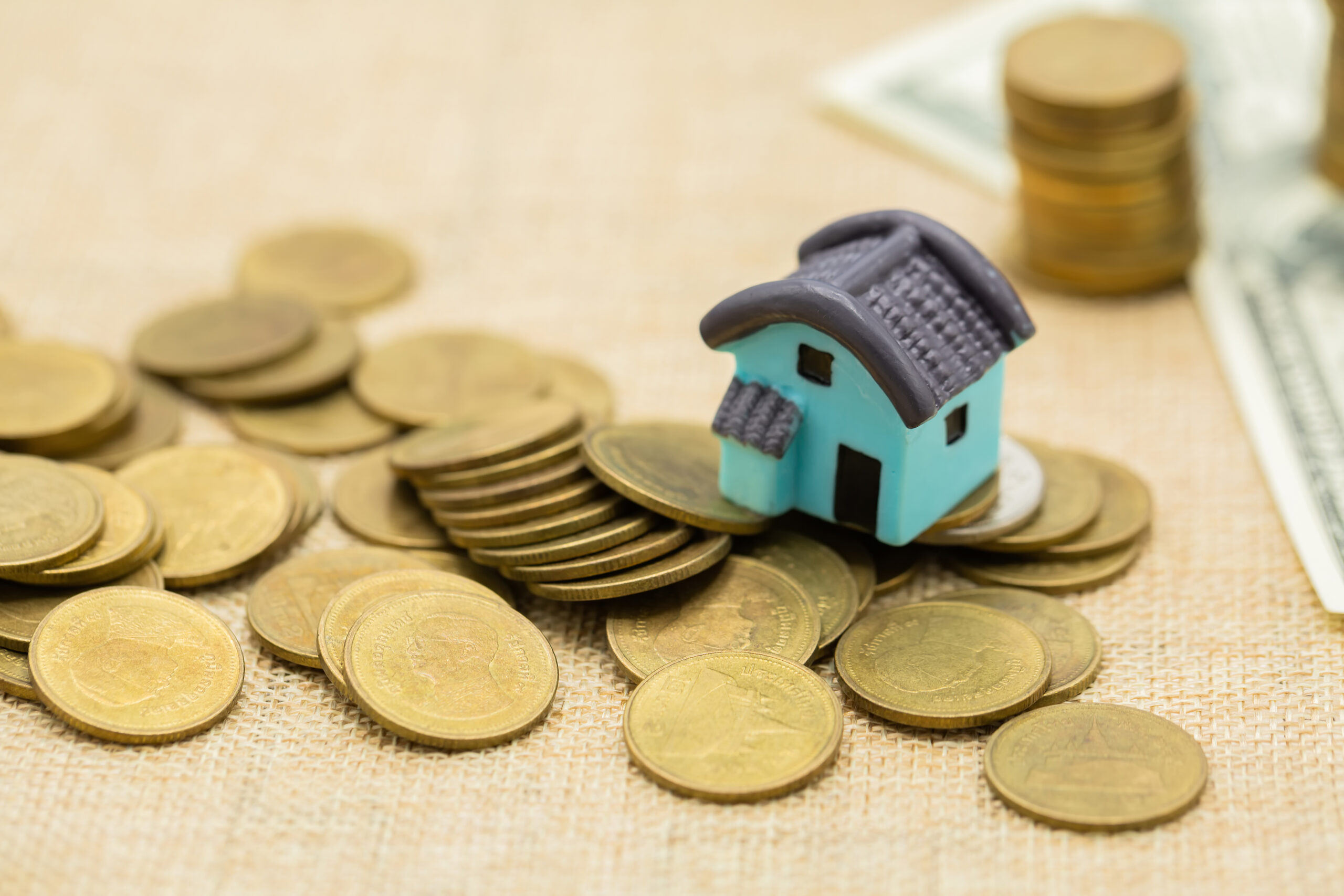When it comes to managing your home’s equity and leveraging it for financial flexibility, a second lien HELOC (Home Equity Line of Credit) might be an option worth exploring. Whether you’re looking to consolidate debt, fund a home renovation, or even invest in your future, understanding how a 2nd lien HELOC works can provide you with the insights you need to make informed decisions.
In this guide, we’ll walk you through everything you need to know about a second lien HELOC, including how it works, the benefits and risks, qualifications, and alternatives. By the end, you’ll have a clear picture of whether this financial tool fits into your overall mortgage and debt strategy.
If you’re ready to take control of your finances and eliminate years of interest payments on your mortgage, consider exploring this opportunity further. Join The 5-Day “Cashflow Empire Live” and leave with a Custom 5-Year Mortgage Payoff Plan that could change your financial future forever.
What is a 2nd Lien HELOC?
Understanding a 2nd Lien Home Equity Line of Credit
A 2nd lien HELOC is a home equity line of credit that functions as a second mortgage. It allows you to borrow against the equity in your home, but instead of being the first mortgage, it holds a secondary position (hence “second lien”). A lien is essentially the lender’s claim to your property in case of non-payment. In a second lien situation, your primary mortgage holds the first lien, and the HELOC is in second place.
With a 2nd lien HELOC, you receive a revolving line of credit, which means you can borrow, repay, and borrow again as needed—much like using a credit card, but with potentially lower interest rates and larger credit limits. The amount you can borrow depends on the equity in your home and your lender’s terms.
Unlike a traditional loan, the interest rate on a 2nd lien HELOC is typically variable, which means it can fluctuate over time depending on market conditions. This may lead to both lower or higher rates depending on economic changes.
How Does a 2nd Lien HELOC Differ from a First Lien HELOC?
The main difference between a second lien HELOC and a first lien HELOC is the order of claims. A first lien HELOC is the primary loan against your property and is paid off first if you sell your home or default on payments. A second lien HELOC, on the other hand, is subordinate, meaning the first mortgage gets paid first, followed by the second lien HELOC. This makes second liens riskier for lenders, and as a result, the interest rates on second liens tend to be higher than on first lien HELOCs.
If you’re considering taking out a 2nd lien HELOC, it’s important to understand how the loan will affect your overall mortgage strategy. With a second lien mortgage, if the market turns or your financial situation changes, you may end up with higher monthly payments or limited access to funds.
How Does a 2nd Lien HELOC Work?
Mechanics Behind a 2nd Lien HELOC
A second lien HELOC is secured against the equity in your home. To determine how much you can borrow, lenders will look at your home’s current value and subtract the balance on your first mortgage. The difference is your equity, and the lender will typically allow you to borrow up to a percentage of that equity, often 85% or 90%.
For example, if your home is valued at $300,000 and you owe $150,000 on your first mortgage, your equity would be $150,000. A lender may allow you to borrow up to 85% of your home’s value ($255,000), which means you could be eligible for a second lien HELOC of $105,000 ($255,000 – $150,000).
Once approved, you can draw from your HELOC as needed, up to the limit. This credit line works much like a credit card, allowing you to borrow money, repay it, and borrow again.
Interest Rates & Repayment Terms
The interest rates for a second lien HELOC are typically variable and tied to a base rate like the prime rate. While the rates can be lower than credit cards or personal loans, they can increase during periods of inflation or economic instability.
The repayment terms of a 2nd lien HELOC typically come in two phases: the draw period and the repayment period. During the draw period, which can last anywhere from 5 to 10 years, you can borrow from the credit line as needed. During this time, you may only be required to pay interest on the amount you’ve borrowed. After the draw period ends, you enter the repayment period, during which you must pay back both principal and interest, typically within 10 to 20 years.
While the 2nd lien HELOC is a revolving line of credit, it is important to note that the total balance on the account must be paid off within the terms of the repayment period.
Benefits of a 2nd Lien HELOC
Access to a Flexible Line of Credit
One of the primary benefits of a 2nd lien HELOC is the flexibility it offers. Whether you’re funding home improvements, paying off high-interest debt, or consolidating existing loans, you have access to a revolving credit line that can be used whenever you need it. The flexibility to borrow and repay as needed can help you manage your cash flow efficiently.
Lower Interest Rates Compared to Other Financing Options
Another major advantage of a 2nd lien HELOC is the lower interest rates compared to unsecured loans or credit cards. Home equity lines of credit are secured loans, which means the lender can use your home as collateral in case you default. Because of this security, the rates are generally lower than those of other forms of credit.
For example, a personal loan or credit card might have an interest rate in the range of 15% to 30%, while a 2nd lien HELOC might offer rates closer to 5% to 10%, depending on your creditworthiness and market conditions.
Tax Deductibility
In some cases, the interest paid on a 2nd lien HELOC may be tax-deductible if the funds are used for home improvements or other qualifying purposes. It’s always a good idea to consult a tax professional to understand the full implications of deducting interest from your taxes.
If you’re curious about how to leverage home equity to build wealth and eliminate debt more efficiently, you may want to explore options like the Cashflow Empire Live program, which offers actionable strategies for paying off mortgages and building financial security.
Risks and Drawbacks of a 2nd Lien HELOC
Potential for Foreclosure
Like any secured loan, if you fail to make payments on your 2nd lien HELOC, your lender may initiate foreclosure proceedings. Since the loan is secured by your home, it’s important to consider whether taking on a second lien HELOC is the right choice for your financial situation, especially if you already have significant debt.
Variable Interest Rates and Monthly Payments
While the initial interest rates on a 2nd lien HELOC may seem attractive, they can rise over time, leading to higher monthly payments. This can be especially problematic if you’re in the draw period, where you may be relying on low interest payments but need to prepare for the repayment period, which often comes with higher payments.
Limited Borrowing Amount
While a second lien HELOC provides access to a significant line of credit, it is still limited to a percentage of your home’s equity. This may not be sufficient if you have a high level of debt or need more funds than your equity allows.
How to Qualify for a 2nd Lien HELOC
Credit Score & Income Requirements
To qualify for a 2nd lien HELOC, most lenders will require a good credit score (usually 620 or higher) and a steady income to ensure you can repay the borrowed funds. Lenders will also consider your debt-to-income (DTI) ratio, which is the percentage of your income that goes toward debt payments.
Home Equity & Loan-to-Value Ratio (LTV)
Lenders typically require a loan-to-value (LTV) ratio of 85% to 90%, which means that your total debt (including the first mortgage) cannot exceed 85% to 90% of your home’s appraised value. If your home has significant equity, you’re more likely to qualify for a 2nd lien HELOC with favorable terms.
If you’re interested in a tailored mortgage plan to help pay off your debt faster, consider joining the Cashflow Empire Live program for expert guidance on building a strategy for eliminating your mortgage in five years or less.
When Should You Consider a 2nd Lien HELOC?
Ideal Situations for a 2nd Lien HELOC
A 2nd lien HELOC can be a great tool for homeowners looking to access cash for specific projects, such as home renovations or consolidating higher-interest debt. If you have a substantial amount of equity in your home and are disciplined about paying off the debt, a second lien HELOC can offer financial freedom.
However, if you have multiple debts and can’t guarantee you’ll be able to make the payments, a second lien HELOC may not be the best choice.
When to Avoid a 2nd Lien HELOC
If your home’s equity is minimal or you’re already struggling with other debt obligations, taking on a second lien may increase your financial burden. Additionally, if you’re uncertain about your long-term financial situation or expect interest rates to rise significantly, a 2nd lien HELOC could potentially become a risky move.
Alternatives to a 2nd Lien HELOC
If a second lien HELOC isn’t the right fit for you, consider alternatives such as a home equity loan, which provides a lump sum of money with a fixed interest rate, or a cash-out refinance, which allows you to replace your current mortgage with a larger one to access home equity.
Conclusion
A 2nd lien HELOC can be an excellent way to tap into your home’s equity for financial flexibility, but it comes with risks that should not be overlooked. If you understand how a 2nd lien HELOC works, weigh the benefits against the drawbacks, and make sure you qualify, it could be an important tool in your financial toolbox.
Ready to take control of your debt and build a solid financial future? Learn how to pay off your mortgage in five years or less by joining the 5-Day Cashflow Empire Live Program. Take the first step toward financial freedom today!
Affiliate Disclaimer: BestMortgages.co may include affiliate links, which allow us to earn a small commission when you make a purchase through them. This helps support our site at no extra cost to you. Thank you for your support!




0 Comments